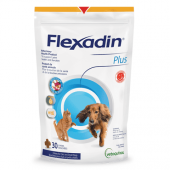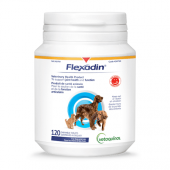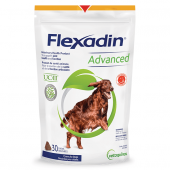Cats walk on the tips of their paws, sneak in practically anywhere, have amazing balance and can jump 7 times their own height. Because of this, their owners often think that cats don’t get joint problems like osteoarthritis. Unfortunately, our older kitties can also have joint problems… and osteoarthritis affects nearly 90% of cats over 12 years of age.
Osteoarthritis is a degenerative cartilage disease
It involves joint pain and swelling, which gradually reduce your pet’s mobility. It is crucial to take action when the first signs appear and to consult your veterinary professionals to prevent the osteo from becoming worse.It is very important that your cat continues to move around in order to maintain his/her physical health. There are several exercises for getting him/her to move safely; ask your veterinary clinic to provide you with a safe exercise program for your cat.
As well as physical activity, you should keep an eye on your cat’s weight, since excess weight puts extra pressure on the joints. Your veterinarian may be able to suggest a more balanced diet, especially for overweight cats, if necessary.
Lastly, Flexadin is a nutritional supplement intended to support your cat’s joints: talk to your vet about adding Flexadin to your cat’s daily routine.






